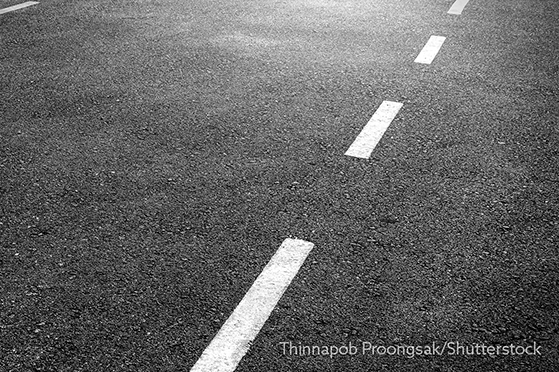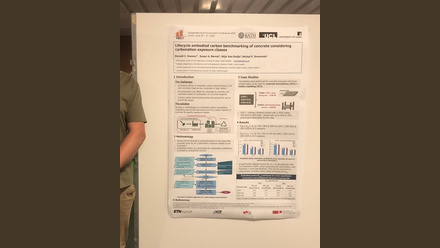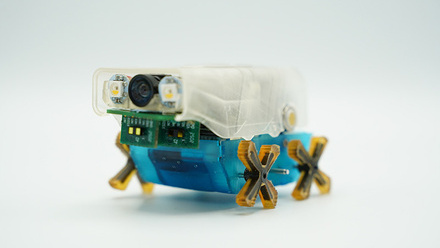Fabric interlayer system for roads
Dr Michael Ford MIMMM at Haseltine Lake Kempner explores a patent relating to a fabric interlayer system for roads

Road surfaces have to withstand heavy loads, friction and exposure to the elements for long periods of time, preferably without incurring significant damage such as the formation of cracks or potholes. Avoidance of water infiltration into road surfaces is particularly important, since this can weaken the road-base material and underlying ground support.
Most road surfaces are made of an asphalt-concrete composite material, also known as tarmac. When roads eventually become damaged, repairs are typically carried out by the addition of new asphalt-concrete or chipseal overlays, or by milling away and replacing existing road layers.
Another common repair strategy is to insert what is known as a geosynthetic interlay, either underneath a brand new asphalt-concrete layer or between the existing road surface and an overlayer being deposited. Such interlayers are intended to retard road-surface fatigue, reduce reflective cracking (where stress concentrations due to cracks in underlying layers cause overlay material to crack in the same location), act as a barrier to moisture and provide a durable base for surface treatments such as chipseal.
Most known geosynthetic interlayers consist of needle-punched, nonwoven, paving fabrics made from thermoplastic staple fibres, combined with an asphalt cement. While these interlayers are effective, they must ultimately be removed when a road is finally resurfaced, requiring milling of underlying layers to restore the correct road profile.
Unfortunately, geosynthetic interlayers can cause clogging of milling drums, making road resurfacing more time-consuming, and can reduce the recyclability of the resulting milled material.
As an alternative to needle-punched, nonwoven, paving fabrics, fibreglass-based geosynthetic interlayers have been trialled. While such interlayers can be milled more easily due to the brittle nature of glass fibres, they are generally incapable of absorbing the same levels of stress as their nonwoven counterparts. They are also less effective as moisture barriers due to a lower ability to absorb and retain asphalt cement. In addition, such interlays tend to be more difficult to handle and can require use of personal protective equipment to avoid injuries from the needle-like glass fibres.
In January 2023, Propex Operating Company, LLC, based in Chattanooga, Tennessee, USA, was granted European patent EP3686344B1 entitled Waterproofing paving fabric interlayer system and method of waterproofing, repairing or constructing a roadway. This patent describes a millable and recyclable, waterproofing, paving fabric interlayer system, which includes a flexible, nonwoven needle-punched paving fabric and a tack coat.
The paving fabric comprises about 50-99% by weight of thermoplastic fibres having a length in the range of about 25-76mm. It has a first face which is heat-set or fused under pressure to create a smooth surface and a second opposite face having a fuzzy surface. The thickness of the fabric is in the range of about 0.76-1.27mm (when tested according to the ASTM 5199 standard), and in the range of about 1.52-2.03mm when asphalt-saturated (when tested according to the ASTM D6140 and D5199 standards). The paving fabric also has an asphalt retention capacity of about 0.45-1.36L/m² (when tested according to the ASTM D6140 standard). The patent further describes a method of waterproofing, repairing or constructing a roadway or other hard surface using the fabric.
According to the patent, one particular benefit of the paving fabric is that it provides an effective waterproofing moisture barrier, defined as having a permeability of no more than 1 x 10-4cm/s, in contrast to known fibreglass-based interlayers.
Other benefits are considered to be a high elongation to rupture – described as achieving up to 70%, compared to fibreglass-based interlays which achieve around 3-5%. This is so that the fabric can stretch over bumps and undulations in the road, while maintaining integrity of the moisture barrier, and excellent asphalt absorption and retention that improve fatigue resistance and reduce reflective cracking.
Importantly, the pressurised heat-set or fusing step in the manufacturing method ensures that one side of the fabric is made smooth while the other side remains fuzzy. The smoothed surface has an increased modulus and stiffness, and reduces bleed-through of an asphalt tack coat. The fuzzy surface exhibits enhanced bonding with the tack coat.
According to the patent, the heat and pressure treatment also causes the fabric to tear into small pieces when milled or recycled. This is aided by the relatively short length of the thermoplastic fibres used. The fabric therefore has lower tensile and tear strengths and elongations than traditional nonwoven paving fabrics, which tend to use longer, entangled fibres. This should reduce clogging of milling drums and improve recyclability.
The patent also explains that the interlayer can have a light colour, which enhances reflection of solar energy and keeps the fabric cool. This helps the tack coat set properly and prevents equipment tracking and fabric pick-up during installation, while also increasing the comfort of road workers in the daytime and improving visibility during night-time operations.
Read the full patent at bit.ly/43zG5Ny







